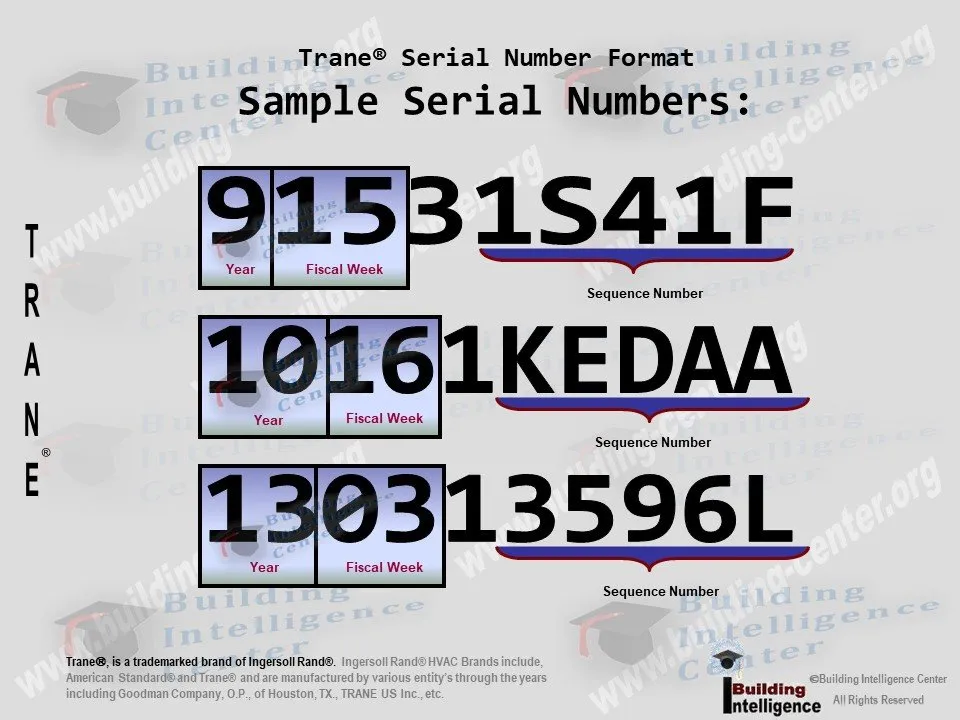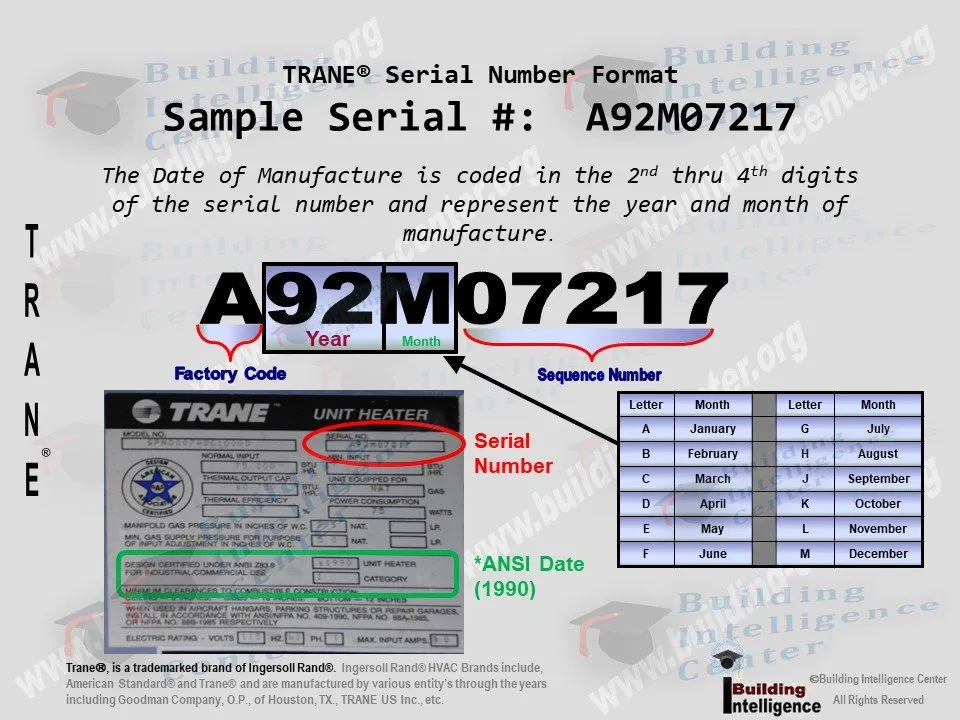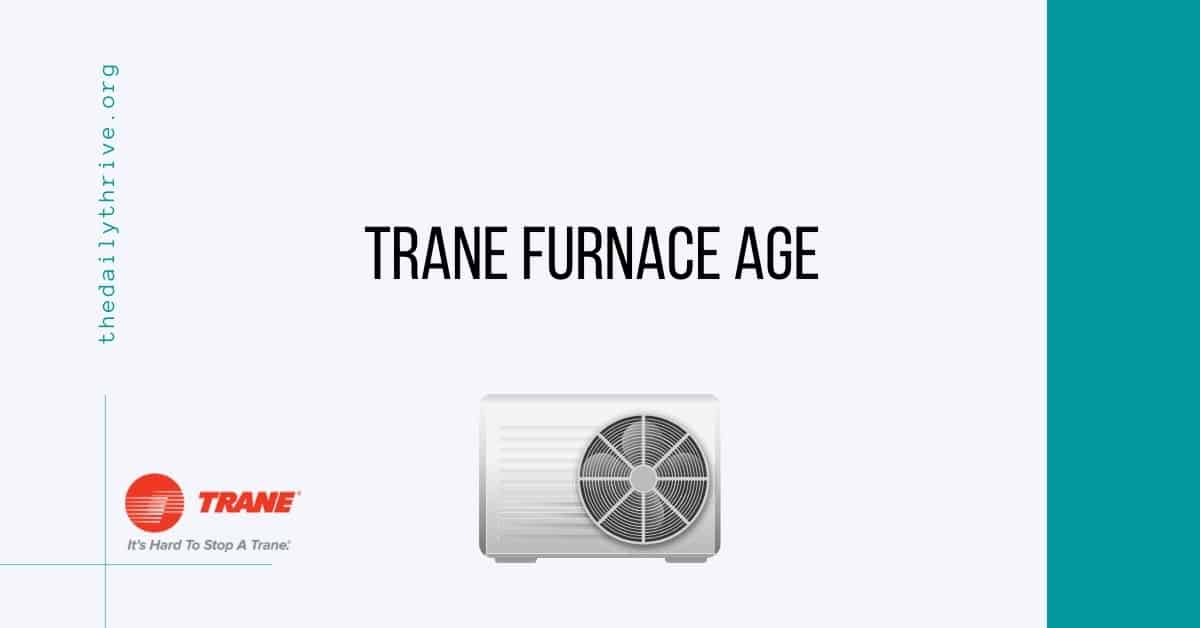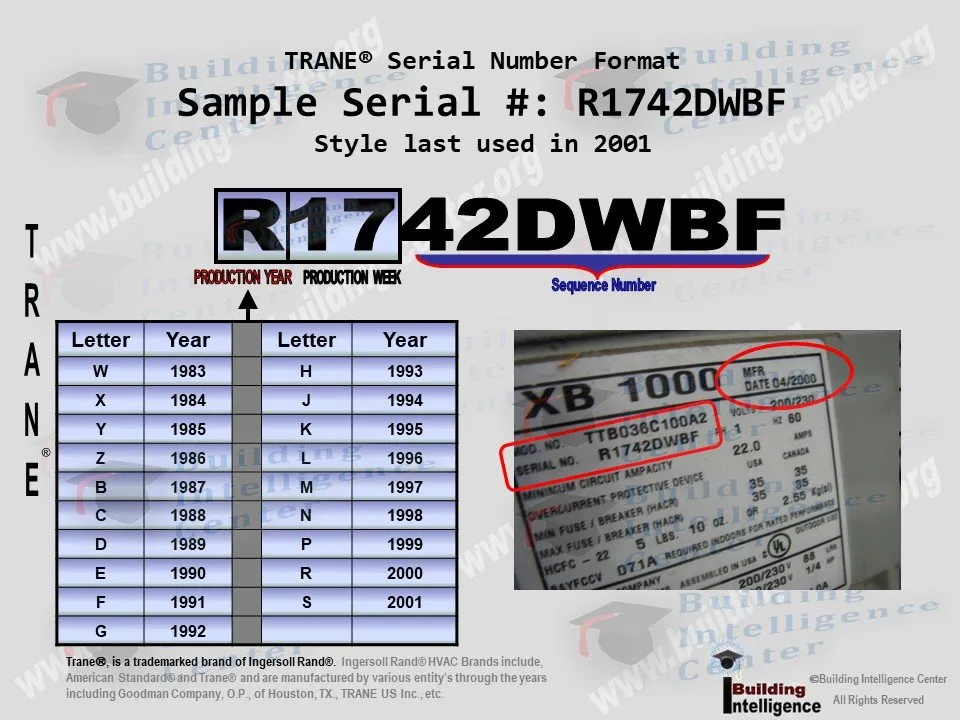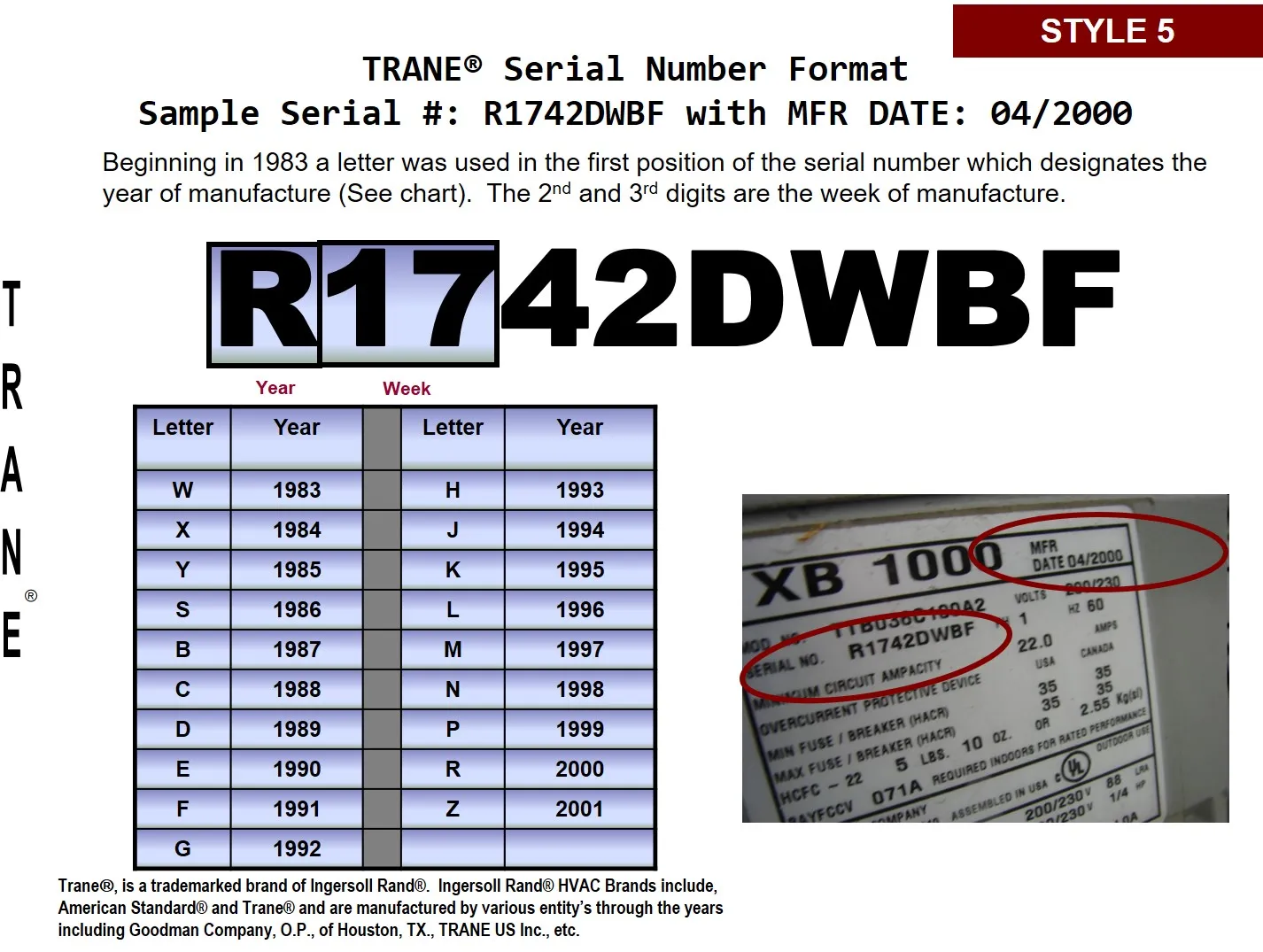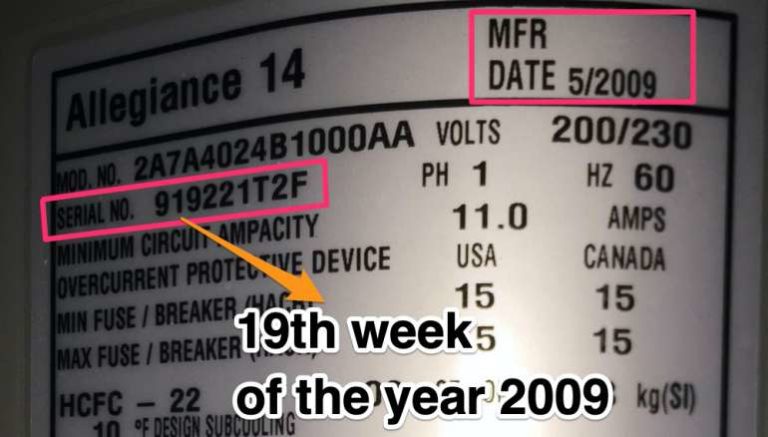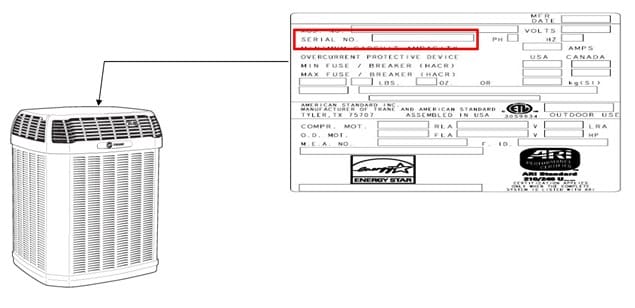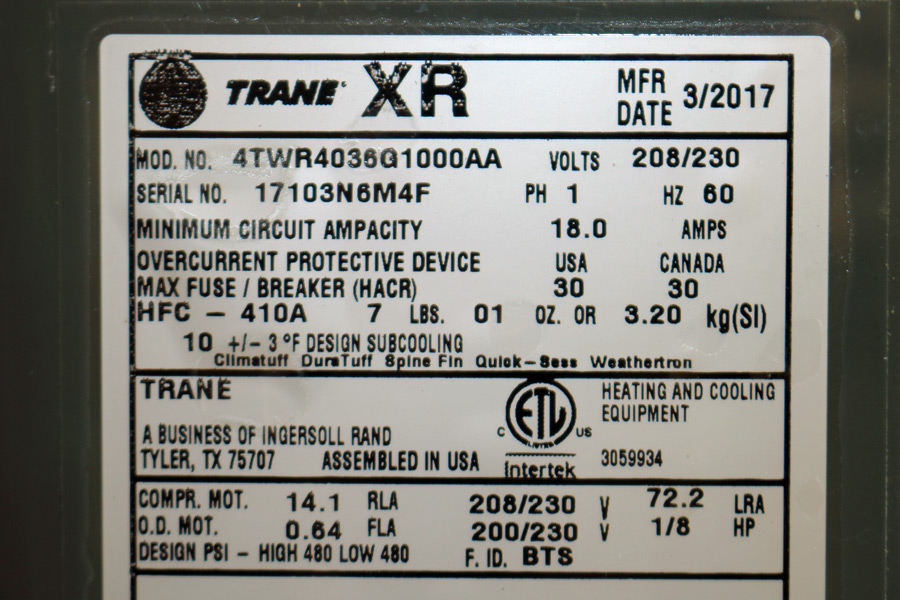Trane Serial Number Age Lookup

Understanding the age of your Trane HVAC system is crucial for several reasons. Whether you're buying a new home, considering replacing your existing unit, or simply trying to assess its efficiency, knowing the manufacturing date can significantly impact your decisions. This guide will provide you with the information needed to accurately determine the age of your Trane unit using its serial number.
Why Determine the Age of Your Trane HVAC System?
Several compelling reasons justify the need to identify the age of your Trane HVAC system:
- Assessing Efficiency: Older systems typically have lower SEER (Seasonal Energy Efficiency Ratio) ratings for cooling and AFUE (Annual Fuel Utilization Efficiency) ratings for heating. Knowing the age helps estimate how efficiently your system is operating compared to newer, more energy-efficient models. A lower rating translates to higher energy bills.
- Evaluating Remaining Lifespan: HVAC systems have a limited lifespan, generally ranging from 15 to 20 years. Determining the age allows you to estimate how much longer your unit is likely to function reliably, aiding in proactive replacement planning.
- Warranty Verification: Trane offers warranties on its products. Knowing the manufacturing date is essential to verify if your unit is still covered under warranty, potentially saving you money on repairs.
- Property Valuation: When buying or selling a property, the age of the HVAC system is a significant factor in determining the overall value. A newer, more efficient system can increase property value, while an older one may necessitate negotiation for replacement.
- Repair vs. Replace Decisions: Faced with a major repair, knowing the unit's age helps decide whether to invest in fixing an aging system or opt for a more cost-effective and energy-efficient replacement.
Decoding the Trane Serial Number
The serial number is the key to unlocking the age of your Trane HVAC system. The location of the serial number can vary depending on the type of unit, but it's typically found on a rating plate or sticker attached to the exterior of the unit.
Common Locations for Serial Numbers:
- Air Conditioners (Outdoor Unit): Look on the side or back panel of the outdoor condenser unit.
- Furnaces (Indoor Unit): Check inside the furnace cabinet, often on the side wall or near the burner compartment. Always turn off the power to the furnace before opening the cabinet.
- Heat Pumps (Outdoor Unit): Similar to air conditioners, the serial number is usually on the side or back panel of the outdoor unit.
- Air Handlers (Indoor Unit): The serial number is typically located inside the air handler cabinet. Again, disconnect the power before accessing the interior.
Once you've located the serial number, understanding its format is crucial. Trane uses a specific alphanumeric code to embed the manufacturing date within the serial number.
Understanding Trane's Serial Number Format:
Trane primarily uses two serial number formats to indicate the date of manufacture:
- Format 1 (Most Common): This format typically consists of 10 characters, usually a combination of letters and numbers. The first two digits usually represent the week of the year, and the next two represent the year of manufacture. For example, a serial number starting with "23XX..." would indicate that the unit was manufactured in the 23rd week of the year. If the next two numbers are "18", it was made the 23rd week of 2018.
- Format 2 (Less Common, Older Units): In older units, the serial number format might be different. The year may be represented by a single letter or a combination of letters and numbers that requires cross-referencing with Trane's historical data or a Trane representative.
Important Note: If the first two characters are letters, you will most likely need to call Trane directly or use the services of an HVAC professional to determine the manufacturing date. You can contact Trane's customer service with the full serial number to obtain this information.
Step-by-Step Guide to Finding Your Trane's Age
- Locate the Serial Number: Carefully inspect the exterior or interior (after safely disconnecting power) of your Trane unit for the rating plate or sticker containing the serial number.
- Identify the Format: Determine which of the above formats the serial number follows. Is it a 10-character alphanumeric code, or does it have a different structure?
- Decode the Date: If the serial number follows the common format (Format 1), extract the two digits representing the week and the two digits representing the year.
- Verify the Information (If Needed): If you are unsure about the decoding process or have an older unit with a different serial number format, contact Trane customer support or a qualified HVAC technician for assistance.
Example Scenarios
Let's illustrate with a couple of examples:
- Example 1: Serial Number: 2819ABCDEFG. This indicates the unit was manufactured in the 28th week of 2019.
- Example 2: Serial Number: 0522XYZ123. This indicates the unit was manufactured in the 5th week of 2022.
Trane HVAC Systems: Features, Benefits, and Costs
Trane offers a wide range of HVAC systems, each designed to meet different needs and budgets. Here's a brief overview of some popular models and their key features:
Trane XV20i TruComfort™ Variable Speed Air Conditioner:
- Features: Variable-speed compressor, SEER rating up to 22, quiet operation, smart home compatibility.
- Benefits: Exceptional energy efficiency, consistent temperature, enhanced comfort, and reduced noise levels.
- Estimated Cost: $5,000 - $8,000 (installed).
Trane S9V2 Gas Furnace:
- Features: Two-stage gas valve, variable-speed blower motor, AFUE rating up to 97%, ComfortLink™ II communicating technology.
- Benefits: High energy efficiency, quiet operation, consistent heating, and improved air circulation.
- Estimated Cost: $4,000 - $7,000 (installed).
Trane XL18i Air Conditioner:
- Features: Two-stage cooling, SEER up to 18, durable Climatuff® compressor, Spine Fin™ coil.
- Benefits: Energy efficient, reliable performance, quiet operation.
- Estimated Cost: $3,500 - $6,000 (installed).
Note: These are just a few examples, and Trane offers many other models with varying features and price points. Consult with a qualified HVAC contractor to determine the best system for your specific needs and budget.
Warranties and Maintenance
Trane offers different types of warranties on its HVAC systems, including base warranties and extended warranties. The terms and conditions of the warranty can vary depending on the model and installation date. Regular maintenance is crucial to maintain the warranty and ensure the system operates efficiently.
Key Warranty Considerations:
- Registration: Many warranties require online registration within a specific timeframe after installation.
- Transferability: Some warranties are transferable to subsequent homeowners, while others are not.
- Maintenance Requirements: Regular professional maintenance is often a requirement for maintaining warranty coverage.
Essential Maintenance Tips:
- Regular Filter Changes: Replace air filters every 1-3 months to maintain airflow and prevent strain on the system.
- Coil Cleaning: Clean the outdoor condenser coil annually to remove debris and improve efficiency.
- Professional Inspection: Schedule annual maintenance inspections with a qualified HVAC technician to identify and address potential issues early on.
When to Consider Replacing Your Trane HVAC System
Several factors can indicate that it's time to replace your Trane HVAC system:
- Age: If your system is 15-20 years old, it may be nearing the end of its lifespan.
- Frequent Repairs: Constant breakdowns and costly repairs can signal that the system is no longer reliable.
- Decreased Efficiency: Rising energy bills despite consistent usage can indicate declining efficiency.
- New Refrigerant Requirements: Older systems may use R-22 refrigerant, which is being phased out. Replacements often use R-410A, a more environmentally friendly option.
- Improved Technology: Newer systems offer advanced features, such as variable-speed compressors and smart home integration, which can enhance comfort and save energy.
Conclusion
Determining the age of your Trane HVAC system is a vital step in making informed decisions about its maintenance, repair, or replacement. By following this guide and understanding the serial number format, you can accurately identify the manufacturing date and assess the system's overall condition. When in doubt, consult with a qualified HVAC professional for expert advice and assistance. Remember to prioritize regular maintenance to extend the lifespan of your system and ensure optimal performance.
